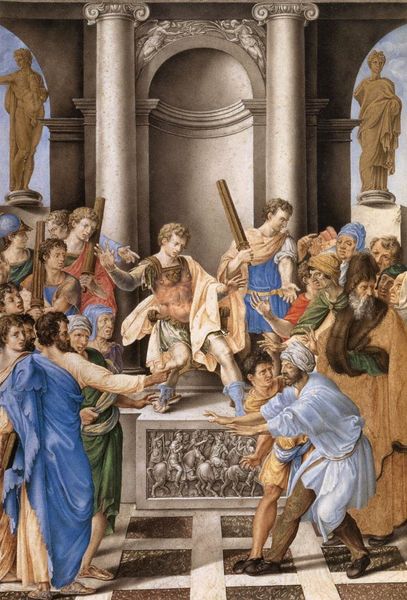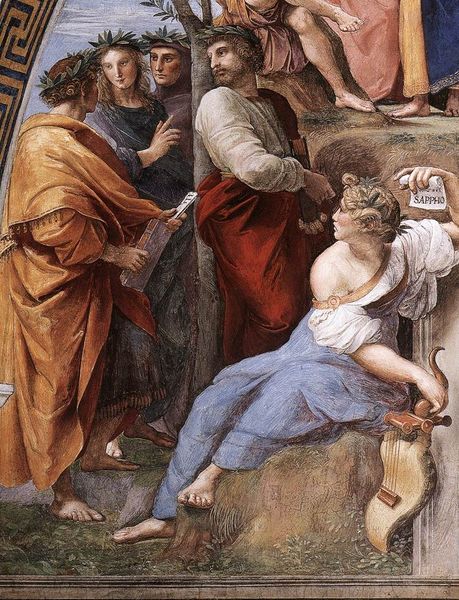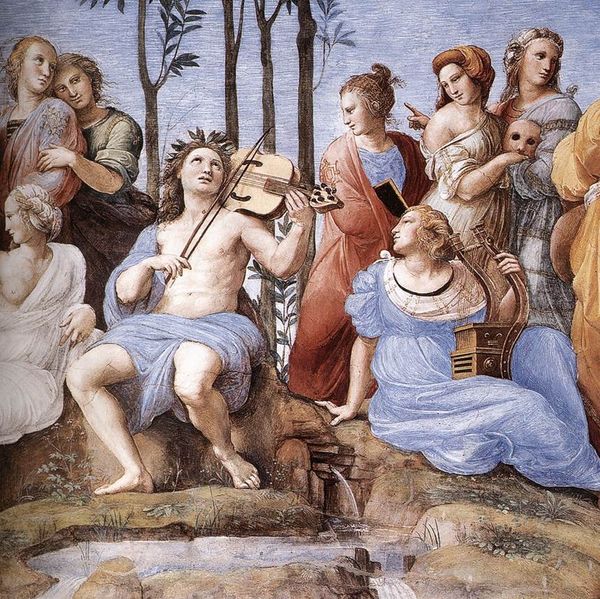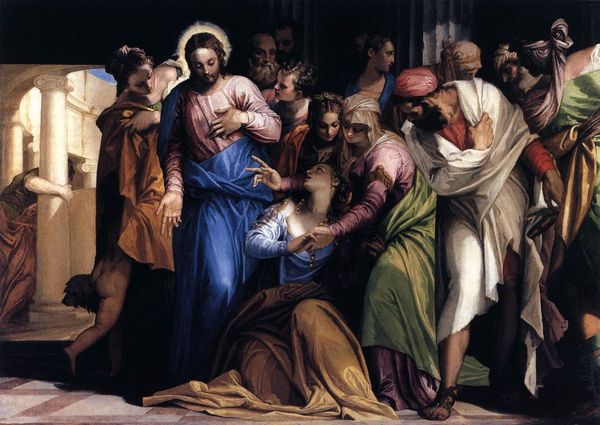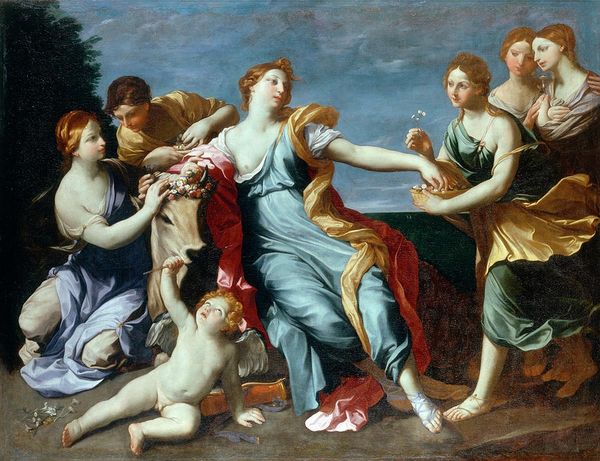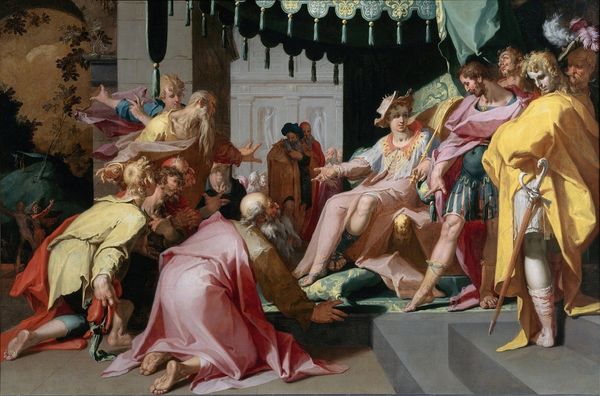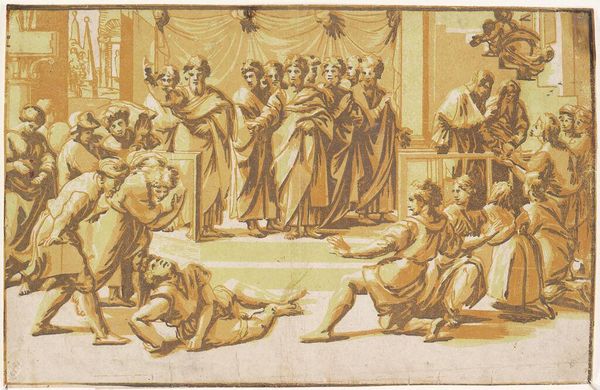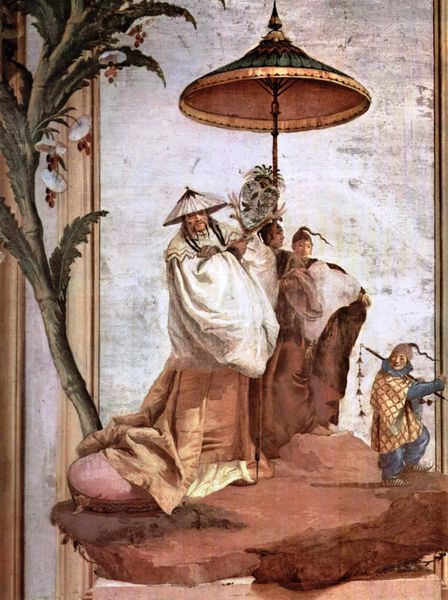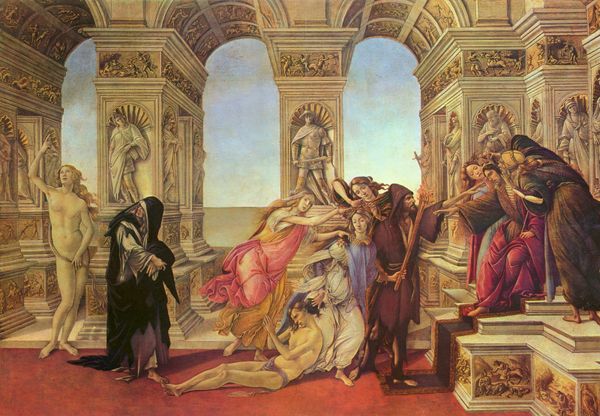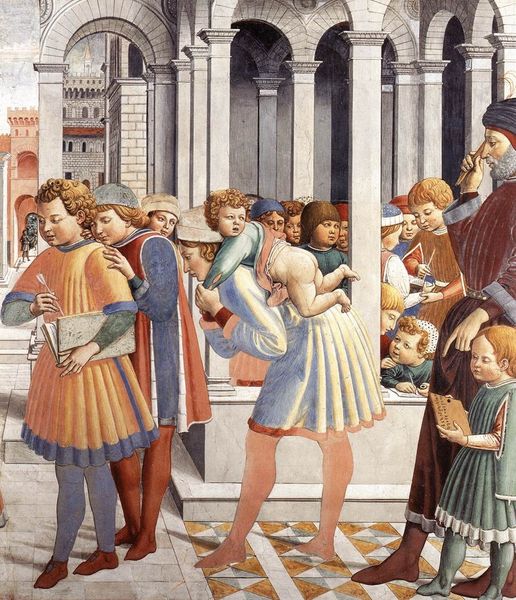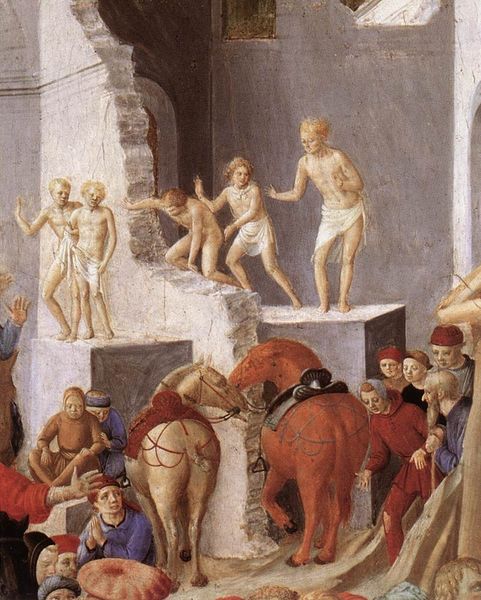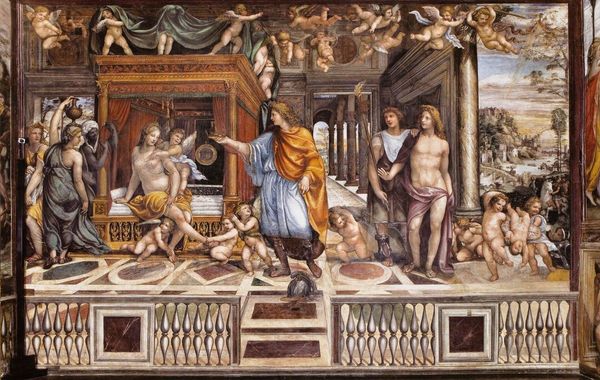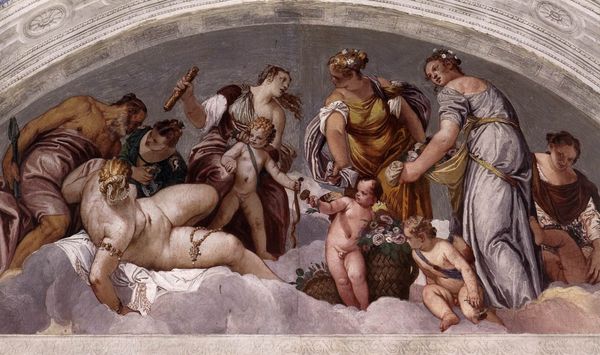
painting, fresco
#
allegory
#
narrative-art
#
painting
#
figuration
#
fresco
#
mythology
#
history-painting
#
italian-renaissance
Copyright: Public domain
Curator: I find myself immediately drawn to the raw emotion in this composition; a perfect encapsulation of turmoil. Editor: Indeed. We are looking at Raphael's fresco, "The Judgment of Solomon," created in 1519. It’s located in the Palazzo Apostolico in the Vatican. Raphael, of course, being a master of the Italian Renaissance. Think of the process; the physical act of applying pigment to wet plaster, each brushstroke contributing to this narrative. Curator: Yes, it is compelling. Observe how Raphael arranges the figures. Solomon is staged as supremely indifferent above it all; then there are these supplicating women, a near mirror of each other, bisected by that henchman swinging a blade over the infant! It is structured with such force and intentionality that there is hardly any doubt this fresco attempts to instill in us shock. Editor: I'm fascinated by the socio-political context too. Raphael was working during a period of intense religious and political upheaval. "The Judgment of Solomon," a biblical story emphasizing wisdom and justice, becomes incredibly important in that particular time. Curator: Absolutely, this type of judicial theatrics often serves as political validation through public spectacles; that much is true of its social utility. What this also illustrates, however, is that with just color, texture, line and perspective, Raphael's piece directs us into a dramatic event through design—the figures caught in this tragic moment all pull the eye into one undeniable truth that something awful is about to happen to an innocent child. Editor: And consider how Raphael was working within a highly structured workshop system. His assistants would have prepared the plaster, ground the pigments. We see only Raphael's hand, but there were other laborers integral to the realization of the work, too. And this work and labor, presented inside the center of power, served what purpose? To legitimize? To remind? Curator: Well, I am of the opinion that it still stirs a sense of urgency today and is an elegant marriage of form and meaning. Editor: Ultimately, seeing "The Judgment of Solomon," with the interplay between process and design, makes one reflect on Raphael's unique place in that pivotal moment of artistic production.
Comments
No comments
Be the first to comment and join the conversation on the ultimate creative platform.
